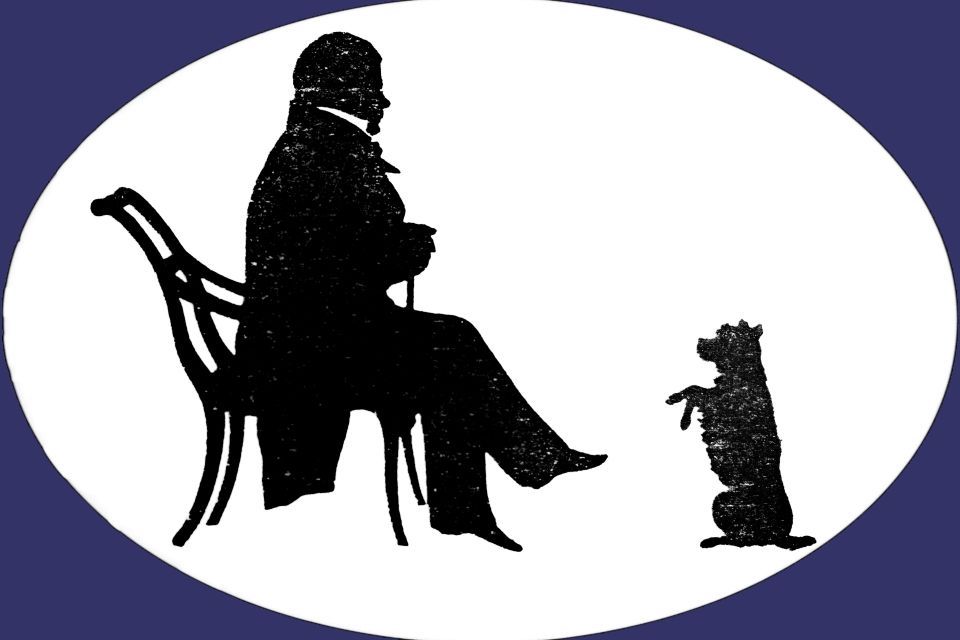Walter Scott and Secret History
Thursday 1st June 2023
Summary of the Talk
Hillary Clydesdale, a PhD candidate at the University of Edinburgh, delivered an insightful lecture on how Walter Scott engaged with the genre of secret history—a form of historical writing concerned with exposing private lives and concealed scandals, especially of public figures.
She opened by referencing The Fortunes of Nigel, in which the narrator Captain Clutterbuck navigates a maze of dark corridors to find the elusive, ghost-like author of Waverley. This metaphorical space—a blend of secrecy and literary production—frames Scott's broader interest in private truths hidden within the archive.
Clydesdale traced the origins of secret history to *Procopius’ Anecdota (c. 515 AD)**, which revealed salacious details about Emperor Justinian and Empress Theodora. The genre flourished in the 17th and 18th centuries, often targeting political figures and their domestic lives, and frequently drawing accusations of libel or indecency.
She discussed how Scott engaged directly with this genre through his 1811 publication Secret History of the Court of James I, a work informed by older memoirs and scandalous pamphlets, including one bizarre tract blaming Cromwell’s tyranny on his wife’s poor cooking.
Scott’s work, while critical of gossip and slander, still valued such texts for the overlooked historical truths they might contain. He shared a belief—common among secret historians—that public history could not be complete without its hidden domestic context.
In tandem with contemporaries like Isaac D’Israeli, Scott helped shift secret history from salacious political exposure to a form of historical and sociological inquiry—a tool for exploring how private life intersects with public memory.
She then explored how Scott drew directly from his own 1811 secret history to construct the fictional world of The Fortunes of Nigel, particularly in his depiction of King James I. Scott’s goal, she argued, was to redeem James’s reputation, which had long suffered from Anthony Weldon’s scathing portrayals.
Scott also utilised secret history to challenge dominant narratives, such as in The Heart of Midlothian, where the backstory of the Porteous Riots is reframed through domestic scandals, romance, and private suffering.
Clydesdale expanded the discussion to consider how Scott himself became the subject of secret history after his death. James Hogg’s Familiar Anecdotes of Sir Walter Scott (1834) provoked outrage for its intimate revelations, but also marked a shift in public appetite—towards the private lives of authors as a valid form of historical interest.
Scott had foreseen this, and his journal reflects his awareness that his life would become the subject of scrutiny. He also anticipated that even his letters, later published in 1894, would become part of the public record and serve as unofficial history.
Key Takeaways
- Secret History originated as a genre of historical writing designed to expose private lives, often scandalously.
- Walter Scott valued the genre not for its gossip but for its ability to recover marginalised truths and critique dominant narratives.
- Scott’s historical novels—particularly The Fortunes of Nigel and The Heart of Midlothian—blend private/domestic histories with public events, showing the personal impact of historical upheavals.
- After his death, Scott himself became the subject of secret history, particularly through James Hogg’s controversial publication.
- Scott’s work reflects a complex awareness of his public image, literary celebrity, and the blurred line between historical inquiry and voyeurism.
Interesting Points
- Scott’s use of private letters and scurrilous pamphlets not only shaped his fiction but gave him tools to revise or resist hostile portrayals—especially of Scots and Scottishness.
- The tract blaming Cromwell’s tyranny on his wife’s cooking is a remarkable example of domestic detail used politically.
- Scott’s friends and family, especially John Gibson Lockhart, worked actively to suppress scandalous accounts like Hogg’s, indicating how tightly authorial legacy was controlled.
- Scott’s portrayal of King James I was deliberately revisionist, drawing from disputed or suppressed material to offer a more sympathetic account.
- Clydesdale’s analysis positions Scott as not just a novelist, but a shaper of historical memory—balancing secrecy and disclosure, myth and reality.
Hilary Clydesdale is an AHRC-funded PhD student at the University of Edinburgh. In her thesis, titled Secrecy, Surveillance and Counterintelligence in the Prose Fiction of Walter Scott and Robert Louis Stevenson, Hilary explores the relationship between domestic forms of secrecy and the narrative structure of the nineteenth-century historical novel, and she traces this connection to the changing landscape of Scottish historicism throughout the century. At the centre of her research, Hilary draws attention to the importance of Secret History in the development of nineteenth-century literature, from 1814 to 1894, by highlighting its nuanced role in the historical novels of Walter Scott (1771–1832) and Robert Louis Stevenson (1850–1894). Hilary also has a keen interest in Walter Scott’s narrative poetry and she has written an article, published in Scottish Literary Review, analysing the complex relationship between poetic form and historical structure in Scott’s The Lady of the Lake.
Synopsis: In her lecture, ‘Walter Scott and Secret History’, Hilary Clydesdale draws attention to the nuanced and complicated relationship Scott forges between secrecy and the publication of historical narratives. She begins by looking to the historical origins of the genre of Secret History, before moving into an examination of Scott’s own
Secret History of the Court of James the First, published in two volumes in 1811. Hilary argues that, as a proponent of Secret History, Scott’s fascination with the genre informs his approach to composing, and constructing, his historical novels. Then, having traced Scott’s fascination with exploring and troublingly the boundaries between private, domestic secrets and public history in both his non-fiction and fiction work, she concludes by drawing attention to the way that Scott contributes to a distinctly nineteenth-century evolution of Secret History, not only as its author, but also as its subject.


